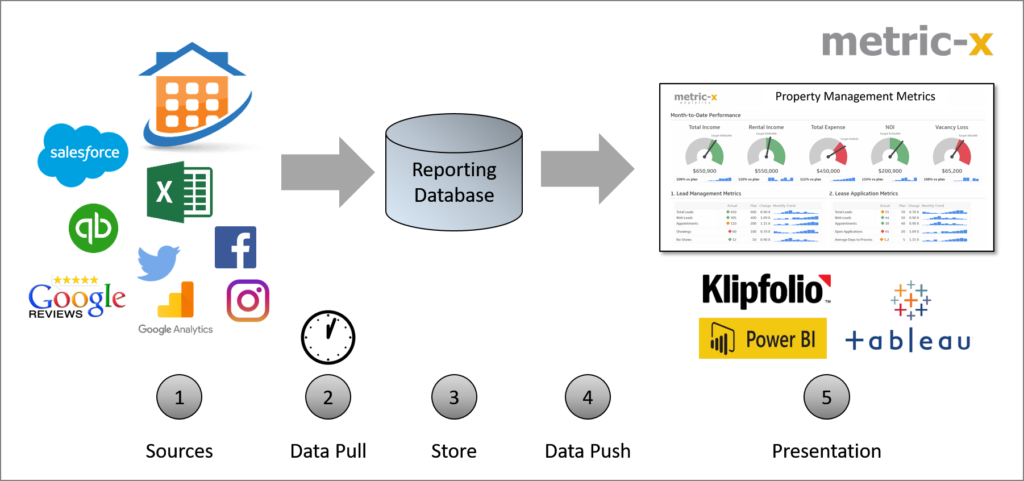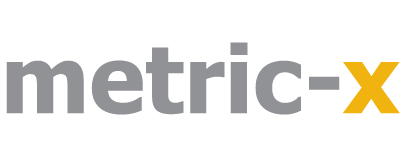Process Overview
We have a phased approach for building and operating the infrastructure that provides you the right reports and metrics for driving your business.
The reason for doing the work in phases is to set clear expectations about business goals, budgets and the value realized from analytics.

The first phase is the “Vision” phase in which we produce the “Analytics Roadmap”. This phase involves 2 or 3 meetings, and we use the “Visioning Workbook” and demos to generate ideas for the Roadmap.
The second phase is the “Prototype” phase in which we build a report or dashboard. The purpose is to give you hands-on experience with the analytics tools, such as Power BI or Tableau to visualize your own data in the reports. You don’t pay for any software licenses, and you can discontinue the engagement if you don’t see the value in further investment in analytics capabilities.
By the end of the Prototype phase, you will have a clear idea of what you will be buying, how much you will be paying, and what value you will be getting from the solutions we offer. This is the right time to start the third, long-term phase of our relationship: the Build & Operate phase.
The third phase, “Build & Operate”, is an on-going relationship in which we build your Data Warehouse, integrate it with your systems, and build the reports and features listed in the Roadmap.
While the large Real Estate management companies and REITs have their in-house IT and Analytics departments, we become your outsourced partners providing the same capabilities at a fraction of the cost. See more details and the FAQ below.
1. Visioning Phase
Goals:
- To decide how you will use analytics and metrics for building high-performing teams, delighting your customers and impressing your investors
Activities:
- Complete the Visioning Workbook
- View and critique demos
- Prioritize goals
- Fill the Roadmap template
- Review cost estimates
- Make go/no-go decision for moving forward
Output:
- Visioning Workbook
- Roadmap
- Cost estimates and Business Case
Duration:
- 1 to 2 Weeks
- Meeting 1: Define Current State / Future State
- Meeting 2: Review Future State, Conduct Demos
- Meeting 3: Cost Estimates, Go/No Go Decision
The Visioning Workbook
The Visioning Workbook is our proprietary tool for conducting the Visioning Phase.
During the Visioning Phase, we will jointly fill out the workbook to define the Current State and Future State.
The workbook lists 4 levels (from basic to highly advanced) for analytics related topics, such as the Month End Close, Report Sharing, Data Organization, Plan vs Actual Monitoring and more.
Below is a screenshot from the Visioning Workbook.
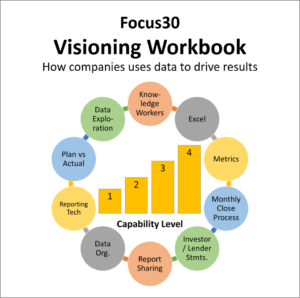
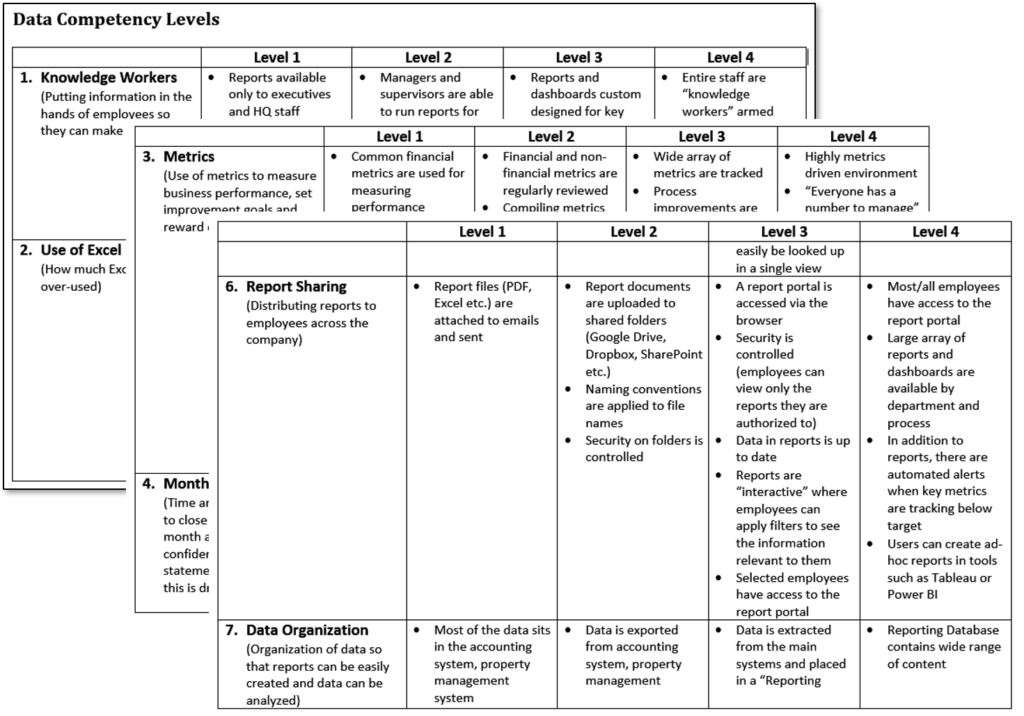
The Analytics Roadmap
The Analytics Roadmap is the main output of the Visioning Phase.
Below is an example of a Roadmap that will be created during the Visioning Phase.
The Roadmap serves three important purposes:
a) Enables you to articulate the features and capabilities that are of value to you
b) Enables Metric-X to estimate the cost for delivering the solutions
c) Helps you determine if there is a business case for investing further in analytics capability
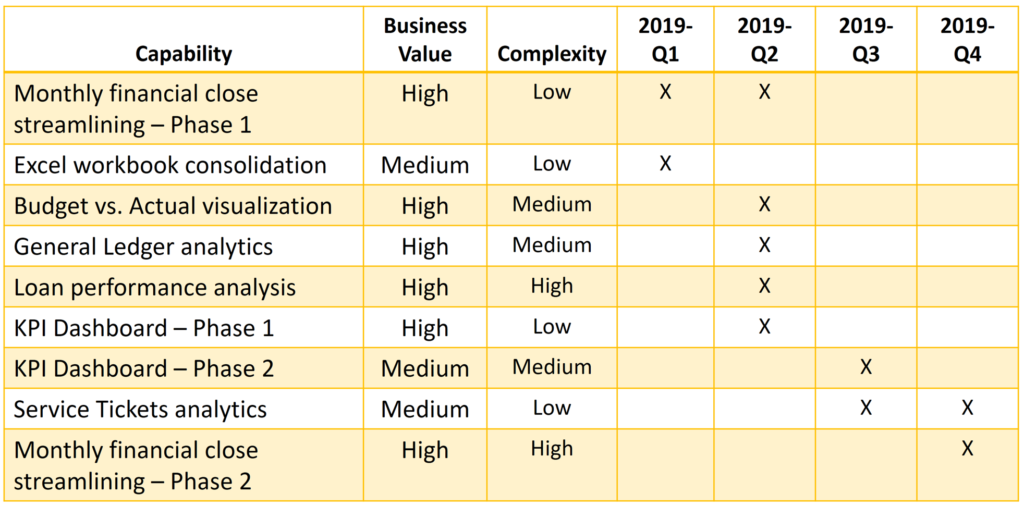
2. Prototype Phase
Goals:
- To get hands-on exposure to the technology and visualize your data (without paying for software licenses or making a long-term commitment)
Activities:
- Select the solution to prototype (Client)
- Build a partial data warehouse
- Connect data warehouse to property management system
- Build report or dashboard
- Use the solution, provide feedback (Client)
- Make Go/No Go decision to proceed (Client)
Output:
- Data warehouse
- Reports or dashboards
Duration:
- 1 to 2 weeks
- Meeting 1: Define goals, scope of prototype
- Meeting 2: Review, hand-off prototype
- Meeting 3: Feedback, Next Steps
3. Build & Operate Phase
Goals:
- To build the capabilities identified in the roadmap and keep your data warehouse fresh
Activities:
- Operate the data warehouse
- Build new reports and features (Metric-X)
- Add more data from systems to data warehouse
- Test, accept the newly release reports and features (Client)
- Utilize the analytics capability to realize business value (Client)
- Monthly meeting to review Roadmap, prioritize goals for coming month (Client, Metric-X)
Output:
- Data warehouse content
- Reports or dashboards
- Revisions to Roadmap
- Training material
Duration:
- On-going. Usually a 12-month agreement.
F.A.Q.
Why do you use a phased approach?
The phased approach is the best way for limiting risk and avoiding future surprises.
Technology projects are notorious for being late, over-budget and failing to meet expectations. Our process anticipates these risks and addresses them phase by phase.
Our goal is to have strong, long-term relationships with our clients, and starting off on the right foot with a roadmap and business case is the best way forward.
What if I just want a report?
We can give you a quote for building a specific report. You don’t have to go through each phase in order to get a quote. However, in most cases, the report you want will need to be refreshed (monthly, weekly, daily, on-demand etc.). Therefore, you will need a data infrastructure for generating the report. Once you have got the basic infrastructure in place, you might as well get more use out of it. So, it might make sense to list all of your potential requirements and build the solutions of highest value.
What is a data warehouse?
A data warehouse is used for reporting and data analysis. A data warehouse contains your data organized for simpler reporting. It can contain data from multiple systems, and the data is standardized for property names, GL Account names, Unit Types etc. We also call the data warehouse a “reporting database”.
Why do you charge for the Visioning Phase?
Conducting the Visioning Phase is like creating a drawing for a building before starting to build it. We envision the future you want, and jointly create a game plan for realizing the vision. We share our expertise and knowledge of technology. There is real value in it for you. Even if you decide not to proceed beyond the visioning phase, you will have learned a lot and know what mistakes to avoid.
Can we skip the Prototype phase?
Sure. If you are highly confident that you will get value from the technology and solutions we will implement, and are willing to sign an agreement for 12 months, then we can skip the Prototype phase.
Can the money I spend on the Prototype phase be used towards future development?
We will not charge you twice for building the same solution. In most cases, the solution that is prototyped can be deployed in the production environment and extended.
What do you mean by “data infrastructure”?
- See the diagram below. The data infrastructure consist of:
- The automated connections to your systems
- The database that stores your data
- The data warehouse (which consists of “tables’ organized for flexible reporting and analysis)
- The reports and dashboards
- The reporting software (such as Power BI or Tableau)
- Security settings throughout the infrastructure components
